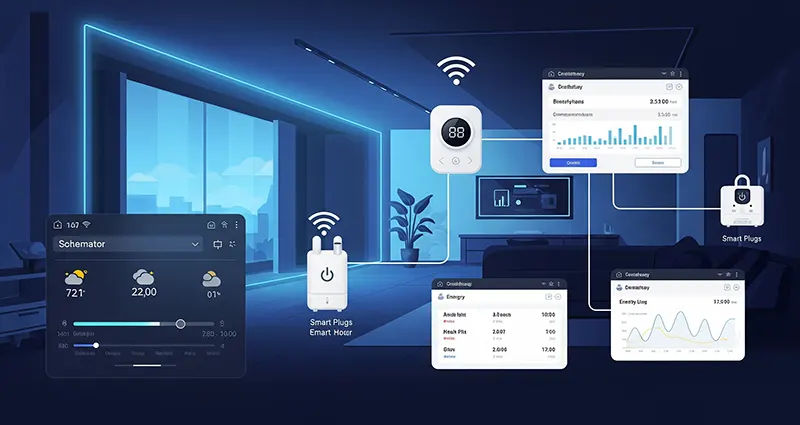In today’s digital age, the Internet of Things (IoT) has revolutionized the way we interact with our homes, making them smarter, more efficient, and sustainable. IoT devices, equipped with sensors and connectivity, have paved the way for innovative solutions to optimize energy consumption and reduce carbon footprints. By leveraging IoT technology, homeowners can now effectively monitor, manage, and control their energy usage, leading to significant improvements in smart home energy efficiency.
Smart Thermostats for Precision Heating and Cooling
One of the most impactful IoT devices for enhancing smart home energy efficiency is the smart thermostat. These intelligent devices are designed to learn and adapt to homeowners’ preferences, schedules, and environmental conditions, enabling precise control of heating and cooling systems. By utilizing occupancy sensors, weather forecasts, and machine learning algorithms, smart thermostats can optimize temperature settings to reduce energy waste and avoid unnecessary heating or cooling when occupants are away. Through remote access and automation features, homeowners can adjust settings on-the-go, resulting in optimized energy usage and lower utility bills.
Energy Monitoring and Smart Metering Systems
IoT-enabled energy monitoring and smart metering systems provide homeowners with real-time insights into their energy consumption patterns, allowing them to track, analyze, and optimize their usage habits. By monitoring electricity, water, and gas consumption at the appliance level, these devices offer valuable data on where energy is being consumed most and identify opportunities for efficiency improvements. Through interactive dashboards, alerts, and energy usage reports, homeowners can make informed decisions to reduce waste, lower costs, and lower their environmental impact.
Intelligent Lighting and Automated Controls
IoT-connected lighting systems and automated controls play a crucial role in improving smart home energy efficiency by optimizing lighting usage and reducing unnecessary energy consumption. Smart bulbs, switches, and dimmers equipped with sensors and connectivity can be programmed to adjust brightness levels, color temperature, and scheduling based on occupancy, natural light availability, and time of day. By integrating lighting controls with motion sensors, voice assistants, or smartphone apps, homeowners can create personalized lighting scenarios, conserve energy, and enhance comfort and convenience in their living spaces.
Smart Home Energy Management Platforms
Comprehensive smart home energy management platforms serve as centralized hubs that integrate and orchestrate various IoT devices, appliances, and renewable energy sources to optimize energy efficiency. These platforms enable homeowners to monitor and control multiple devices simultaneously, set energy-saving profiles, and automate routines to align energy consumption with dynamic pricing models, peak demand periods, and renewable energy availability. By leveraging smart grids, energy analytics, and demand-response capabilities, these platforms empower homeowners to actively participate in energy conservation efforts and contribute to a more sustainable energy ecosystem.
Renewable Energy Integration and Grid Interactivity
IoT devices are also instrumental in facilitating the integration of renewable energy sources, such as solar panels, wind turbines, and energy storage systems, into smart home energy systems. By connecting these distributed energy resources to IoT-enabled inverters, smart meters, and energy management platforms, homeowners can optimize self-consumption, track energy generation and storage, and participate in peer-to-peer energy trading or grid balancing initiatives. Through grid interactivity and demand-side management, IoT devices enable homeowners to reduce reliance on fossil fuels, promote energy independence, and support the transition to a cleaner, more resilient energy infrastructure.
IoT devices are transforming smart homes into energy-efficient, sustainable environments by providing homeowners with innovative tools and insights to optimize energy consumption, reduce waste, and lower carbon emissions. From smart thermostats and energy monitoring systems to intelligent lighting controls and comprehensive energy management platforms, IoT technology offers a myriad of solutions to enhance smart home energy efficiency. By embracing IoT-driven innovations and adopting eco-friendly practices, homeowners can not only reduce their energy bills and environmental footprint but also contribute to a more intelligent, interconnected, and sustainable energy future. As we continue to harness the power of IoT devices in smart home energy management, we pave the way for a greener, more efficient living experience that benefits both homeowners and the planet alike.









